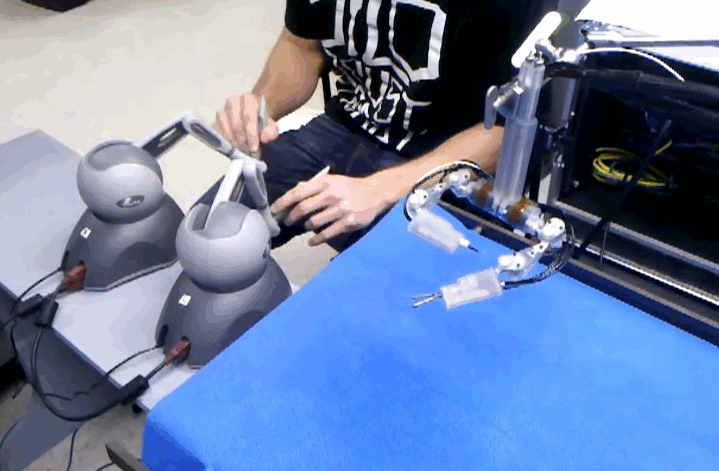Fist sized robot to perform surgery on astronauts in space
The International Space Station has an emergency capsule that can take the astronauts back to Earth within hours in case of emergencies. However, the homeland won't be so easily & quickly reachable when the humans travel to the Mars, which is millions of kilometers away. NASA's developing and training a surgeon to perform all the surgical procedures in space. The interesting thing about this surgeon is that it's a fist sized robot capable of removing appendix, cut unwanted parts of the body and even fix a perforated gastric ulcer. The robot will soon undergo trials in zero gravity conditions in an aircraft and if successful, it will be deployed as an officer on duty in every deep-space mission.
The robot has been developed by a Nebraska based startup called Virtual Incision. In the tests to be conducted soon, the robot will demonstrate its dexterity by performing various actions with the rubber bands and other objects. The bigger challenge in front of this robotic surgeon will be to perform all of its actions in zero-gravity conditions. On Earth, we take several things for granted - just as simple as putting a scissor on the desk; but in space things won't work the same way. For example, in absence of the gravity, body fluids will float free, adding to the overall difficulty in performing operations.

(The GIF image may take longer time to load)
If you think that the whole thing is quite complicated; then be aware that the challenges don't end there. As the spaceships move farther from the Earth; there will be significant delay in transmission of the signals. Which means the commands issued by the surgeons will be issued to the robot a few seconds or minutes later; which certainly isn't an ideal situation for a critical surgery.
While the project is quite an engineering challenge; we hope NASA puts the astronauts through a course in surgery so that they can operate on each other whenever required. We look forward to your opinions.
Source: #-Link-Snipped-#
The robot has been developed by a Nebraska based startup called Virtual Incision. In the tests to be conducted soon, the robot will demonstrate its dexterity by performing various actions with the rubber bands and other objects. The bigger challenge in front of this robotic surgeon will be to perform all of its actions in zero-gravity conditions. On Earth, we take several things for granted - just as simple as putting a scissor on the desk; but in space things won't work the same way. For example, in absence of the gravity, body fluids will float free, adding to the overall difficulty in performing operations.

(The GIF image may take longer time to load)
The engineers at Virtual Incision have been working on this technology for several years. The latest prototype they have built weighs about 400 grams and has two arms to perform all the surgical operations. A video camera mounted on the body will record everything that the robot sees and send the feed to ground station where human surgeons will operate it using joysticks. The team has carried out several experiments in pigs and now plans to perform trials on human cadavers. Once successful, the trials will be performed on living humans on the Earth.
If you think that the whole thing is quite complicated; then be aware that the challenges don't end there. As the spaceships move farther from the Earth; there will be significant delay in transmission of the signals. Which means the commands issued by the surgeons will be issued to the robot a few seconds or minutes later; which certainly isn't an ideal situation for a critical surgery.
While the project is quite an engineering challenge; we hope NASA puts the astronauts through a course in surgery so that they can operate on each other whenever required. We look forward to your opinions.
Source: #-Link-Snipped-#
0
